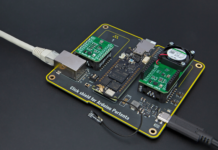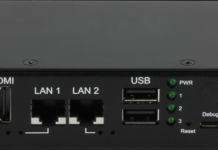
The ubiquity of Information Technology in everyday life makes it urgent to implement it in schools. But there are those who are against the introduction of digital technology in everyday school life and believe that it will have more harm than good. Let’s look at the pros and cons prepared by the expert writers at collegepaperwritingservice.org.
What is Information Technology and its means?
Information technologies are various technologies that are related to the management and development of a large flow of information using computer technology. They involve computer processing of information, storing large amounts of data on removable media, and the ability to transfer information in the shortest possible time.
Whereas only paper textbooks, chalk and a blackboard were available to students until recently, now schools can use various means of modern technology in the learning process: Internet lessons, interactive blackboards, applications for phones and tablets, multimedia projectors, electronic publications and so on. Pupils can learn more efficiently using presentations, videos, electronic archives and libraries, etc.
Information technologies are closely woven into the lives of students, so their absence in schools reduces the quality of the educational process. Technology facilitates the interaction between teachers and students (teachers begin to speak the language that children can understand), which has a positive impact on the quality of the educational process.
Digital education can create new opportunities for learning, introduces personalized educational programs, and creates attractive learning strategies for students.
Information technology can be used at different stages of the educational process: for presenting material, checking the obtained knowledge, consolidating the material, self-learning, etc. By the way, one popular method for improving learning outcomes is to apply to essay writers for hire. These professional authors have the expertise and skills needed to create high-quality essays that can help you succeed in your coursework, exams, or other academic pursuits.
The main examples
Introduction of Information Technology in schools can be carried out in the following directions:
- Replacing textbooks with e-books and tablets.
- Teaching schoolchildren to program.
- Conducting psychological and pedagogical testing.
- Introduction of interactive testing.
- Use of additional educational programs to gain in-depth knowledge or expand their horizons.
- Distance learning.
- Creation of digital science laboratories.
- Introduction of new management and supervision systems: in the area of personnel, class records, accounting.
Students can use information technology not only in lessons, but also as part of extracurricular activities. For example, schools can create robotics circles to teach children the practical application of technology. Additionally, many student apply to essay writers to help them with their coursework and assignments. Hiring an essay writer from collegepaper.net can be a great way to get the content you need while still learning and developing your own writing skills.
Pros and cons for students
The benefits of using information technology in school practice are:
- Students’ mastery of computer technology, without which it is impossible to imagine their conscious life.
- Easier learning of the school program, thanks to multimedia.
- Improved academic performance.
- The possibility of access to educational programs when a student is ill.
- The possibility of adjusting the pace of learning to the individual and cognitive characteristics of a schoolchild.
- Development of flexibility of thinking, goal setting skills, self-education and self-discipline.
The disadvantages of introducing information technologies for schoolchildren may be as follows:
- They can act as a distraction for students. Studies show that smartphones and gadgets distract children from the learning process. Although monotonous lessons without any digital equipment are also not conducive to concentration.
- Technology negatively affects students’ communication skills and social interaction. Children who use it constantly have a decreased ability to live communication. Lack of speech activity and practice in formulating and expressing personal opinions, the influence of cliched thinking can negatively impact independent thinking skills.
- Technology can provoke students to shy away from independent assignments (e.g., they might just copy an abstract from the web).
- Not all students have equal access to technology resources. Not all students’ parents can buy a tablet, smartphone, laptop.
- Information on the web is not always of high quality and verified. Unfiltered information can cause psychological damage to the child.
- Increased strain on the eyes of students.
Pros and cons for teachers
The advantages of implementing information technology in schools are:
- The possibility of making the lesson interesting and dynamic, providing diversity in educational activities: the introduction of new training programs, demonstration of slides, presentations, multimedia albums.
- Increasing the motivation and involvement of students in the learning process, as well as improving academic performance.
- Ability to build materials based on evidence.
- Saving the teacher’s time for explaining and reinforcing new material.
- Simplification of the teacher’s workflow, automation of individual processes (use of ready-made assignments and lesson scripts, remote tracking of progress). Teachers note that the introduction of digital technology has allowed them to save up to an hour of time every day.
The global disadvantage of introducing information technology into schools is that it is expensive and teachers need to be retrained. Other significant disadvantages include:
- Increased demands on teachers and additional time required for retraining.
- The need to develop new educational programs.
- Low information culture of teachers.


















